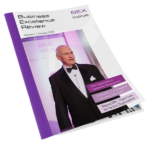O body swayed to music, O brightening glance,
How can we know the dancer from the dance?
~ W.B. Yeats

Gary Yukl notes, in the opening lines of Leadership in Organizations, that leadership is seen as a mysterious process associated with people such as Gandhi, Mao Zedong, and Alexander the Great. British leadership scholar Keith Grint holds that the distance we feel between us and such leaders is part of what maintains the mystique of leadership. However, if we wish to understand leadership and learn how to be effective leaders, we need to demystify leadership (even if that might damage sales of Manfred Kets de Vries’s book, The Leadership Mystique).
Leadership is not a mysterious, magical thing. Assuming that you knew one or both of your parents (if you didn’t, put yourself in the shoes of somebody you know who did), think back to when you were a child. Were there ever times when you thought that one or other of them was stupid, unfair, or wrong? Did you think they were magical or mysterious? Even those who love and respect their parents will probably, on occasion, have thought that they were wrong or unfair while, most likely, none of us thought they were mysterious.
Yet every parent is a leader. They may be good parents or bad ones but they are leaders as they influence the behavior of their children and, to one degree or other, their children follow their example.
Of course, while this perspective helps demystify leaders, its singular focus on leaders, misleads. Leadership cannot exist without followers so it is not something which is only about leaders. Rather, it is about the relationship between leaders and followers.
There are over 1,500 definitions of leadership in the academic literature and there has been at least a century of debate as to whether it is a skill, trait, or an innate behavior. The only thing which scholars appear to agree on is that they disagree. However, this is to be expected as leadership (unlike a stone, for example) is socially constructed and so means different things to different people.
Over a hundred years ago, Eben Mumford observed that leadership is “common to all the different stages of the social process” and that it “arises wherever there are interactions of individuals or of groups, no matter what may be the purposes or aims of these interactions.” As such, as soon as two thinking creatures with a sense of self meet, one or other of them takes the lead.
James MacGregor Burns, who is seen as the father of leadership studies, held that one of the most serious failures of the discipline was the division it made between leadership and followership with followers being consigned to the role of an audience. Following this, the concepts of “follower” and “followership” (a rather clumsy concept which really is just leadership looked at from a different perspective) took on the negative connotation of being something “lesser.”
Effective leadership requires us to transform the concept of followership into a positive one. Followers are not powerless individuals who just do what they are told. They are the people who make others leaders and they hold the key to how successful those leaders will be as they can choose both if they follow and how they follow. Nobody is a leader without followers and nobody is a good leader without willing followers.
Furthermore, in certain contexts everyone is a follower and so everyone has a follower component to their identity and engages in follower behavior. Doing so does not mean that they subordinate themselves to a leader due to his or her position. When they opt to follow, they decide to do so as they believe the other person is better equipped to lead in the given context. This is why, in reality, leadership is most often most effective when shared.
To create effective leadership, we must appreciate the importance of followers and have an intimate understanding of followership since knowing how to achieve effective followership is to know how to be an effective leader (as well as how to be an effective follower when in the follower role).
Although it is as hard as separating the dancer from the dance, the first step to forming the understanding necessary to develop effective leadership is to separate leadership from leaders. While it may appear to be merely semantic, thinking of leadership not in terms of “what leaders do“ but as a dynamically created relationship between people that requires both leading and following enables this.
The benefits of more effective leadership include better functioning teams, greater people engagement, improved productivity, and higher levels of customer delight. BEX can help you achieve this. Take your first step and ask us to help.
















